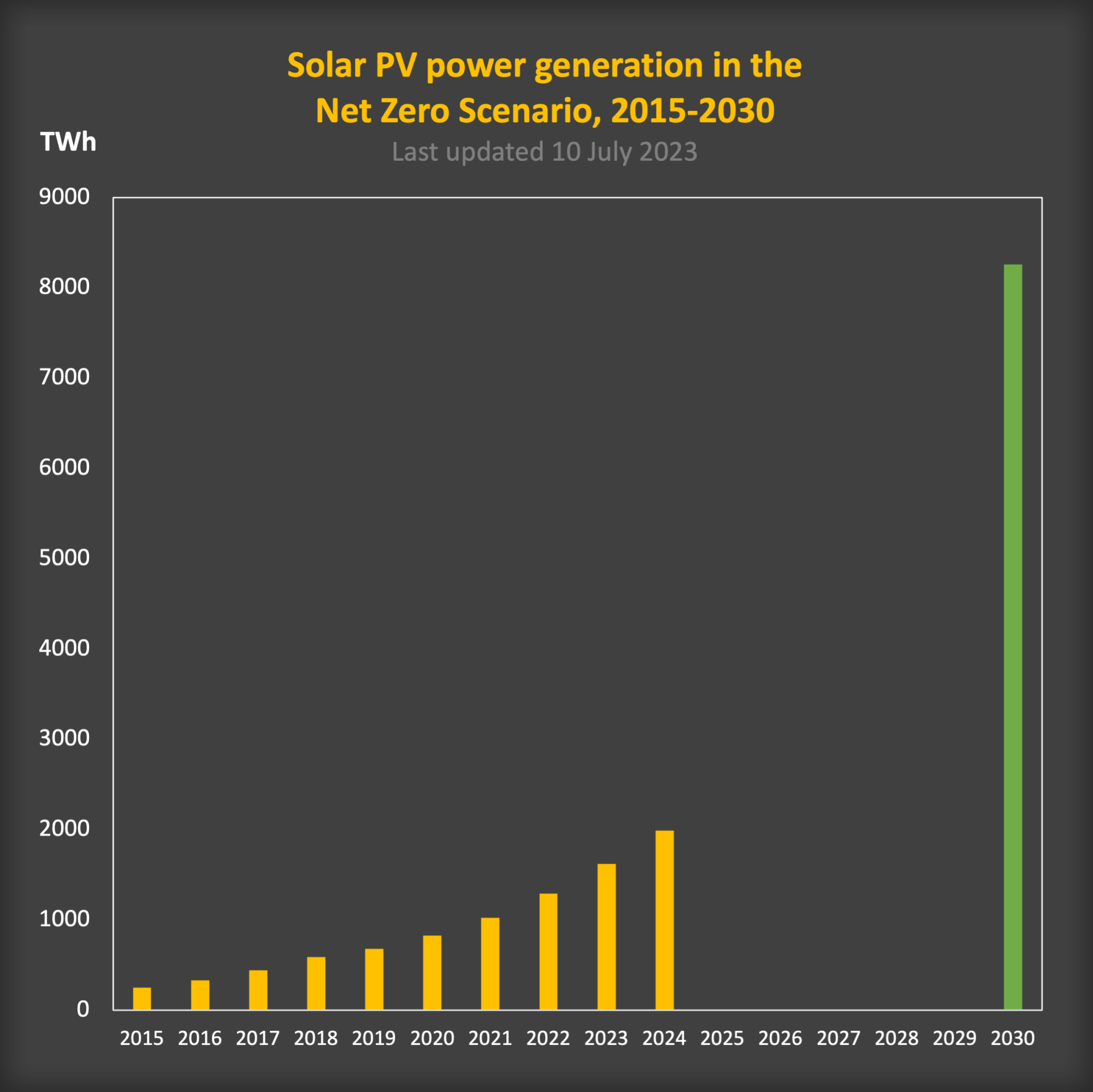The future is here. Be part of it!
The sun is rising!
The deployment of solar saw an unprecedented increase in recent years. Starting from about 250 TWh in 2015, the global generation by solar is predicted to grow 8-fold to almost 2000 TWh in 2024. However, to reach the Net Zero Scenario target of currently about 8300 TWh global generation, this trend needs to continue which requires a yearly increase by roughly 26.7% for the next 6 years.
The future is: renewable, electric and circular.

IEA, Solar PV power generation in the Net Zero Scenario, 2015-2030, IEA, Paris IEA. Licence: CC BY 4.0.
Of course, this alone will not resolve all the energy and environmental challenges we are facing. To slow down the climate crisis will require changes in many sectors (industry, transport, food etc.). One thing, however, is certain: fossil-fuel-based energy sources are of the past. The pollution associated with them is significantly higher -- in the case of petrol e.g. couting from the extraction of crude oil, the transport via pipelines, the refininig process, the transport to petrol stations, to the buring in inefficient engines -- and they are economically not viable anymore. Not to mention the regular desasters linked to oil spills, pipeline leaks, tanker incidents, and offshore drilling accidents, which wreak havoc on ecosystems, communities, and economies worldwide. The future is: renewable, electric and circular.
IEA, Solar PV power generation in the Net Zero Scenario, 2015-2030, IEA, Paris IEA. Licence: CC BY 4.0.
The good news is, unlike oil, the sun does not discriminate and is there for everyone to use, free of charge. With solar photovoltaics (PV) being the cheapest source for energy by now and plummeting PV module prices, large-scale deployment of this mature technology is possible and accessible to a wide range of people.
In 2023, solar PV alone accounted for three-quarters of renewable capacity additions worldwide
The use-cases range from residential roof-top installations to utility-scale systems. Yet, more and more projects are being implemented where PV does not compete for land use. This solar cycling path in Freiburg im Breisgau (Germany), is a good example or the multitude of agri-PV projects where agriculture and PV form a kind of bio-tech symbiosis and not only fresh produce but also green energy is harvested.
However, you might not have the necessary funds at hand to put solar panels on your roof, or you are renting a flat and the installation of solar panels is up for the owner to decide (in Germany it is now possible to install PV on your balcony), you can still be part of of the global energy transition.
For people, for planet, for profit.
In 2018 a friend of mine introduced me to an impact investment platform called Trine. Their concept to boost the energy transition is based on loans that the impact investors (users of the platform) can pledge for renewable energy projects around the globe... it basically is a kickstarter for renewable projects. Once a project is fully funded it is implemented and the loans are repaid over a couple of years with interest. Like this you can contribute to sustainable change, make a difference in people's lives, help cutting CO2 emissions and all while making some profit as well. You can check out my impact with Trine here.
Working in the field of photovoltaics (PV) for over 12 years, I have had the privilege of contributing to the development of Silicon Heterojunction (SHJ) and Tunnel-Oxide-Passivated Contact (TOPCon) solar cells at renowned institutions such as EPFL pvlab (Neuchâtel, CH), UNSW (Sydney, AUS) and Fraunhofer ISE (Freiburg, DE). Besides focusing on more fundamental research, I also applied my expertise in industrial settings at Meyer Burger Research and INDEOtec.
Working in the field of photovoltaics (PV) for over 12 years, I have had the privilege of contributing to the development of Silicon Heterojunction (SHJ) and Tunnel-Oxide-Passivated Contact (TOPCon) solar cells at renowned institutions such as EPFL pvlab (Neuchâtel, CH), UNSW (Sydney, AUS) and Fraunhofer ISE (Freiburg, DE). Besides focusing on more fundamental research, I also applied my expertise in industrial settings at Meyer Burger Research and INDEOtec.

